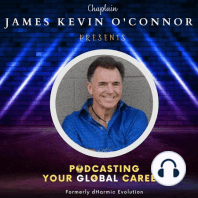37 min listen

The Great Pacific Garbage Patch, What Can You Do?
The Great Pacific Garbage Patch, What Can You Do?
ratings:
Length:
33 minutes
Released:
Jul 24, 2020
Format:
Podcast episode
Description
Starting off today’s show with the magical sounds of a tropical beach in the South of Thailand. With today’s focus on the Great Pacific Garbage patch, my question to you is, how long do you think we have before it all goes away? As a species, we are undoubtedly behind the destruction of countless marine and land plants and animals. We’re only getting worse by the day. Like the other day, I witnessed a lady come out from a car and throw a cigarette she was smoking on the ground and stepped on it. The mere fact that she did everything like it was normal is simply astonishing. This is what we’ve become as a species. In today's show I highlight the enormous amount of trash we are dumping in the oceans and how it is negatively impacting the marine ecosystem, in hope that we can change our attitude and save the oceans, sea’s, and ultimately, our precious planet! The Great Pacific Garbage Patch Also known as The Pacific Trash Vortex, The Great Pacific Garbage Patch spans waters from the west coast of North America to Japan. It consists of The Western Garbage Patch in Japan and The Eastern Garbage Patch that’s between Hawaii and California. The entire Great Pacific Garbage Patch is bounded by the North Pacific Subtropical Gyre - a circular storm pattern that’s formed by the pacific ocean currents. The center of the Gyre tends to be very calm and stable. The circular motion of the gyre draws the debris into the calm center, where it becomes trapped to form the garbage patches. The pacific garbage patch is Made up of microplastics that can’t be seen by the naked eye. The microplastic is mixed with other debris like fishing gear and shoes. 70% of the marine debris in the Pacific garbage patch usually ends up sinking to the bottom of the ocean. 54% of the marine debris comes from land-based activities in North America, while 20% is as a result of offshore oil rigs and large cargo ships that dump or lose litter directly into the ocean. The first trash vortex was discovered by Charles Moore. A sailor who was sailing from Hawaii to California after competing in a yachting race. Charles alongside his crew took note of the vortex when their ship was surrounded by millions of plastic pieces. Plastics make up the majority of the ocean debris majorly because of two reasons: a. Plastic is durable and low cost. Making it popular with manufacturers of consumer products b. Plastic doesn’t biodegrade. It only breaks into smaller pieces and becomes a part of the ocean ecosystem Dangers of the ocean debris Sea animals like seals and turtles sometimes confuse the microplastics for food and eat them. Which ends up killing them. Sea animals get entangled in the nets found in pacific garbage patches and die. The patch blocks sunlight from reaching plankton and algae in the ocean. This disrupts the food chain as sea animals such as turtles and fish we depend on, end up dying. Plastics absorb pollutants such as PCBs from the seawater. This is later passed on to animals that feed on the small pieces of plastic. Because the garbage is far off from any coastline. No country wants to take responsibility or fund the cleanup projects. According to scientists and explorers, the best way everyone can be involved in the clean up is by limiting or eliminating our use of disposable plastics and substituting with biodegradable resources. A lot of the global conglomerates are only profit-driven, and that’s why plastic is such a commonly used resource. The only way this stops is if you as a person, decide to take action. Take responsibility and live your daily life in pursuit of a cleaner and healthier planet. Timestamps. 01:13 About The Great Pacific Garbage Patch 03:24 What causes garbage in the ocean 05:37 The two major garbage patches 07:05 How the North Pacific Gyre is formed 09:44 What the pacific patch is really composed of 11:04 How the trash vortex was first discovered 12:51 Why plastic is the majority of debris in the ocean 13:46 Harmful effects of marine
Released:
Jul 24, 2020
Format:
Podcast episode
Titles in the series (100)
1. Dr. Christopher Stepien Interview: Dr. Chris takes us from a dark past to a bright present, and the brightest future! by Podcasting Your Global Career